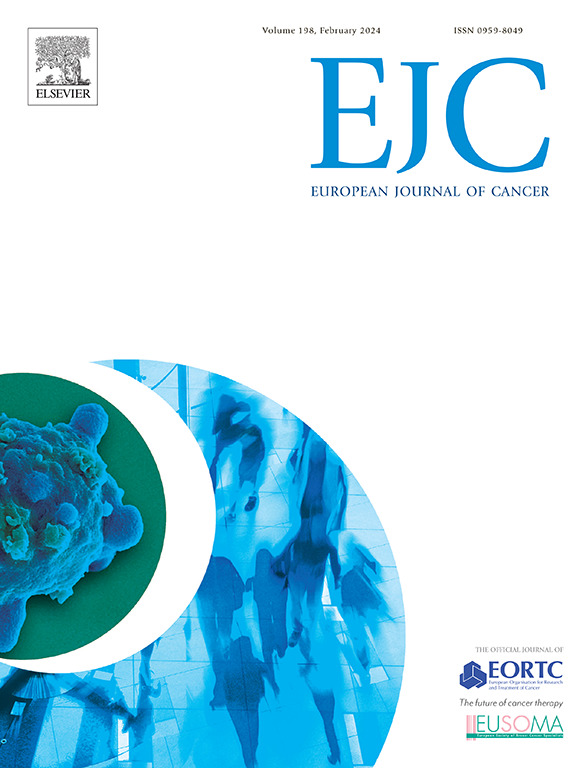FOLFIRI with cetuximab or bevacizumab in RAS wild-type metastatic colorectal cancer: Refining first-line treatment selection by combining clinical parameters
IF 7.6
1区 医学
Q1 ONCOLOGY
引用次数: 0
Abstract
Background
Primary tumor sidedness (PTS) with discrimination of left-sided (LC) and right-sided tumors (RC) guides patient selection for targeted first-line therapy in RAS wild-type (RAS-WT) metastatic colorectal cancer (mCRC). This study assessed the hypothesis whether considering PTS with additional clinical parameters better predicts the treatment benefit of targeted first-line treatment.
Methods
In FIRE-3, first-line treatment with folinic acid, fluorouracil and irinotecan (FOLFIRI) plus cetuximab (FOLFIRI/Cet) was compared to FOLFIRI plus bevacizumab (FOLFIRI/Bev) in patients with RAS-WT mCRC and unresectable metastasis. We evaluated whether combining PTS with number of metastatic sites (NOM), liver-limited disease status (LLD), age, sex, or carcinoembryonic antigen level (CEA) better predicts treatment benefit regarding overall survival (OS). Here, Cox regression models with second-order interactions were applied. Further, the results were validated by policy learning and Lasso regression analysis.
Findings
Among 400 RAS-WT mCRC patients, combining PTS with LLD status in a Cox regression model outperformed PTS alone for predicted treatment benefit (P = 0·005; c‑index=0·603). Significant OS benefit from FOLFIRI/Cet over FOLFIRI/Bev was observed in LC/non-LLD patients (HR=0·62; 95 %-confidence interval [CI]=0·46–0·82; P = 0·002), but mitigated in LC/LLD patients (HR=0·83; 95 %-CI=0·53–1·29; P = 0·400). In RC/non-LLD patients, FOLFIRI/Bev demonstrated a significant OS advantage over FOLFIRI/Cet (HR=2·09; 95 %‑CI=1·20–3·63; P = 0·010). However, RC/LLD patients showed potential benefit from FOLFIRI/Cet, though not statistically significant (HR=0·59; 95 %-CI=0·25–1·39; P = 0·218).
Interpretation
Incorporating PTS and LLD status might improve selection of targeted first-line treatment in RAS-WT mCRC patients. FOLFIRI/Cet appears to be particularly beneficial for LC/non-LLD patients with mitigated benefit in patients with LC/LLD. In contrast, FOLFIRI/Bev is significantly favoured over FOLFIRI/Cet in patients with RC/non-LLD. Notably, RC/LLD patients may still benefit from anti-EGFR therapy despite right-sided primary tumor. These results are hypothesis-generating and warrant further validation.
求助全文
约1分钟内获得全文
求助全文
来源期刊

European Journal of Cancer
医学-肿瘤学
CiteScore
11.50
自引率
4.80%
发文量
953
审稿时长
23 days
期刊介绍:
The European Journal of Cancer (EJC) serves as a comprehensive platform integrating preclinical, digital, translational, and clinical research across the spectrum of cancer. From epidemiology, carcinogenesis, and biology to groundbreaking innovations in cancer treatment and patient care, the journal covers a wide array of topics. We publish original research, reviews, previews, editorial comments, and correspondence, fostering dialogue and advancement in the fight against cancer. Join us in our mission to drive progress and improve outcomes in cancer research and patient care.
 求助内容:
求助内容: 应助结果提醒方式:
应助结果提醒方式:


